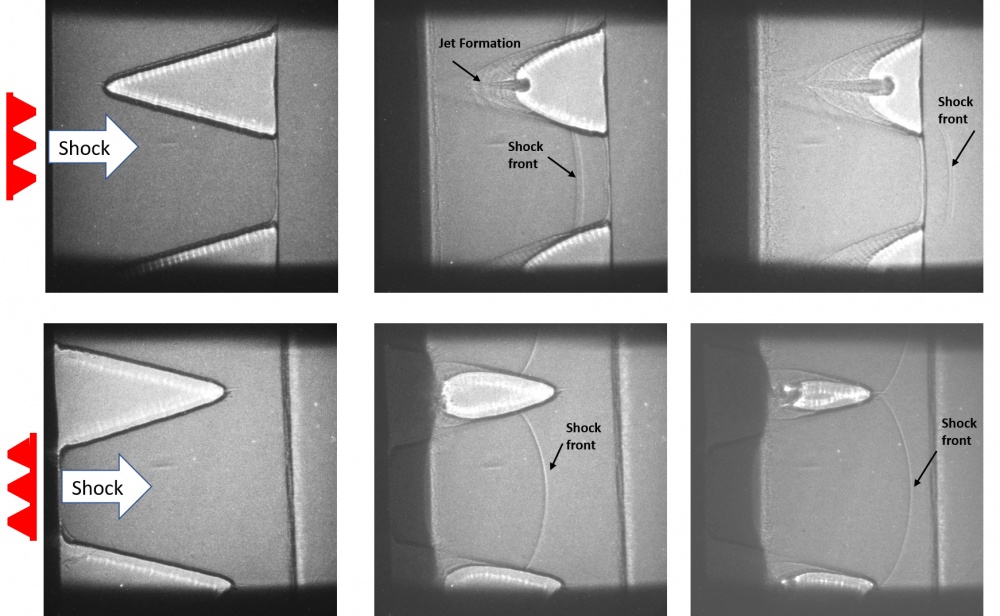
The US Air Force Research Laboratory and research partners at Los Alamos National Laboratory have reportedly developed a 3D printed polymer-based foam structure that can respond to the force of a shock wave to act as a one-way switch, a long sought-after goal in shock research. According to AFRL senior materials research engineer Dr Jonathan Spowart, this new material configuration, although in the early stages of development, could be scaled up in order to be used in different ways for a variety of applications, including for the protection of structures. The material is a foam-like structure that contains a series of specifically-engineered tiny holes that determine the overall behavioral characteristics. Scientists used computer modeling to run trials to determine the most effective hole geometries to achieve the desired material response. According to Spowart, the end product can be described as containing a series of hollow cones. When these cones encounter a shock wave, they collapse inward, forming jet protrusions that project from the opposite side, and these jets localize the shock wave energy, the scientists say.
This story uses material from the US Air Force Research Lab, with editorial changes made by Materials Today. The views expressed in this article do not necessarily represent those of Elsevier.






